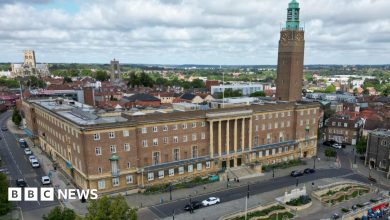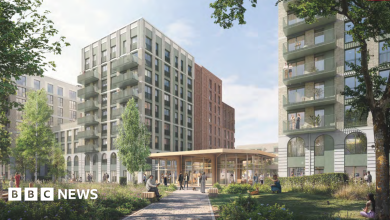Norwich to Tilbury pylon proposal that would go through numerous Suffolk communities to go to Planning Inspectorate

The fate of the picturesque countryside in Suffolk hangs in the balance as National Grid’s proposal to erect 180 kilometers of pylons from Norwich to Tilbury has taken a significant step forward. The Planning Inspectorate has accepted the application for examination, marking the beginning of a lengthy and potentially contentious process. The proposed development, which would see towering pylons dotting the landscape, has sparked widespread opposition from local residents, farmers, and politicians, who are determined to preserve the beauty and character of their communities. At the heart of the controversy is the question of whether the benefits of the project outweigh the potential harm it could cause to the environment and the people who call this area home.
As the application makes its way through the planning process, local MP James Cartlidge is urging his constituents to make their voices heard. Cartlidge, who has been a vocal opponent of the proposal from the outset, is encouraging residents to register their interest on the Planning Inspectorate’s website, allowing them to provide comments and participate in the examination period. The MP’s concerns are not just about aesthetics; he has long argued that the proposed pylons would have a devastating impact on the local economy and the environment. Cartlidge has pointed to studies that suggest underground high-voltage direct current (HVDC) cables could be a more cost-effective and less invasive alternative to the proposed pylons. As the process unfolds, Cartlidge will continue to advocate for his constituents, pushing for a fairer deal that balances the need for energy infrastructure with the need to protect the local way of life.
The Planning Inspectorate’s acceptance of the application marks the beginning of a six-month examination period, during which the Examining Authority will scrutinize the proposal in detail. This will involve considering the potential impact of the pylons on the local environment, the economy, and the community. The Examining Authority will also take into account the comments and feedback from local residents, landowners, and stakeholders who have registered their interest in the proposal. Following the examination period, the Examining Authority will prepare a detailed report, including its recommendation to the Secretary of State for Energy Security and Net Zero. The final decision on whether to approve the application rests with the Secretary of State, who will have three months to make a decision. The entire process is expected to take around 18 months, leaving local residents and businesses in a state of uncertainty.
For the people of Suffolk, the proposed pylons are not just a theoretical concept; they represent a tangible threat to their way of life. The pylons would cut through picturesque villages, such as Hintlesham and Chattisham, Sproughton, Stratford St Mary, and Raydon, leaving a trail of disruption and destruction in their wake. Local farmers are concerned about the impact on their livelihoods, while residents are worried about the potential health risks and the devaluation of their properties. The sense of unease is palpable, with many feeling that their voices are not being heard. As the planning process unfolds, it is crucial that the concerns of local residents are taken into account, and that their feedback is given due weight in the decision-making process.
As the debate rages on, it is clear that the proposed pylons have become a lightning rod for a broader discussion about the future of energy infrastructure in the UK. Proponents of the project argue that it is necessary to meet the country’s energy needs, while opponents counter that it is a short-sighted solution that prioritizes profit over people and the environment. The controversy surrounding the pylons has also highlighted the need for greater transparency and accountability in the planning process, with many calling for more meaningful engagement with local communities and a more robust assessment of the potential impacts. Ultimately, the decision on the proposed pylons will have far-reaching consequences, not just for the people of Suffolk, but for the entire country.
As the Planning Inspectorate begins its examination of the proposal, it is essential that all stakeholders, including local residents, businesses, and politicians, remain vigilant and engaged. The next 18 months will be crucial in determining the fate of the proposed pylons, and it is imperative that everyone who cares about the future of Suffolk makes their voice heard. Whether you are a local resident, a business owner, or simply someone who values the beauty and character of the countryside, now is the time to get involved and make a difference. By working together, it is possible to find a solution that balances the need for energy infrastructure with the need to protect the environment and the people who call this special place home. The battle to save Suffolk’s countryside has only just begun, and it will require the collective effort of everyone who cares about its future.








